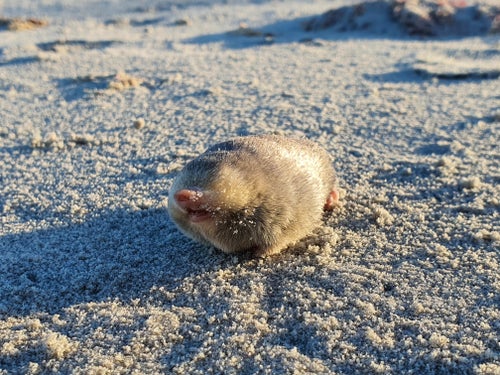Holy mole-y!
A slippery little animal has made an appearance after more than eight decades under the radar of scientists, according to research findings published November 24.
De Winton’s golden mole is a blind mammal about the size of a hamster, with powerful hearing and shimmering, tawny fur that helps it blend in with the South African sand dunes it calls home. The mole gets its glisten from a coat of oil, which also allows the small creature to “swim” through and underneath the sand.


The last known sighting of the elusive critters was in 1937, and scientists believed they were possibly extinct, according to last month’s research paper in the journal Biodiversity and Conservation. The animals had made the “most wanted” list of “lost species” compiled by conservation group Re:wild, which partially funded the effort to find them.
Some thought researchers attempting to locate the species were on a futile game of whack-a-mole.
“One De Winton’s expert told us, ‘you’re not going to find that mole. It’s extinct,’” researcher Samantha Mynhardt told The Associated Press.
With the sniffing ability of a specially trained dog named Jessie, however, researchers were ultimately able to find what they believed to be two golden moles in 2021 near the town of Port Nolloth. The researchers took “non-invasive” cheek and anal swabs to get DNA, and then underwent the lengthy process of testing the DNA to make sure they had the right species, since there are multiple species of similar-looking golden moles.
Since then, researchers have found signs of what they believe are four other De Winton’s golden mole populations in the general area. But the Guardian notes that the area lacks environmental protections, and diamond mining threatens the animals’ habitat.